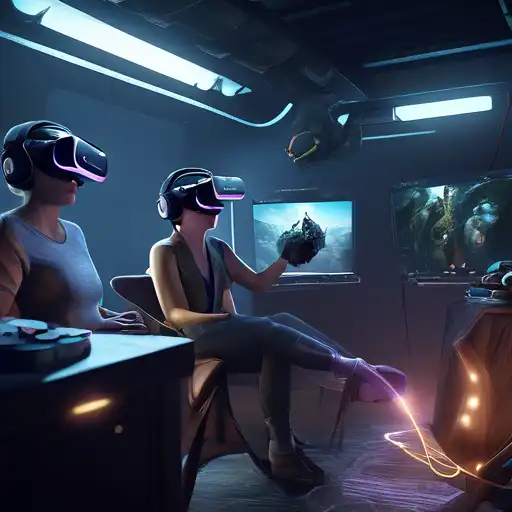Introduction to Virtual Reality
Virtual Reality (VR) has transformed the way we interact with digital content, offering immersive experiences that blur the line between the virtual and the real world. This guide will walk you through the essentials of creating captivating VR experiences that engage and amaze your audience.
Understanding the Basics of VR
Before diving into VR development, it's crucial to understand the core components that make up a VR experience. These include hardware like VR headsets and controllers, software development kits (SDKs), and the principles of 3D design and user interaction.
Choosing the Right Hardware
Selecting the appropriate hardware is the first step in creating a VR experience. Options range from high-end systems like the Oculus Rift and HTC Vive to more accessible mobile VR solutions like the Samsung Gear VR.
Software Development Kits (SDKs)
SDKs are essential tools for VR development, providing the necessary libraries and APIs to build your application. Popular choices include Unity3D with the Oculus SDK and Unreal Engine, both of which offer robust support for VR development.
Designing for Immersion
Creating an immersive VR experience requires careful attention to detail in design and user interaction. Here are some key considerations:
- User Interface (UI): Design intuitive and minimalistic UIs that don't break immersion.
- Audio: Spatial audio can significantly enhance the sense of presence in VR.
- Interaction: Implement natural and intuitive interaction methods, such as hand tracking or gaze-based selection.
Optimizing Performance
VR applications demand high performance to maintain immersion and prevent motion sickness. Optimize your application by:
- Reducing polygon counts in 3D models.
- Implementing efficient lighting and shading techniques.
- Ensuring consistent frame rates of at least 90 FPS.
Testing and Iteration
Testing is a critical phase in VR development. Gather feedback from users to identify areas for improvement and iterate on your design. Pay special attention to comfort and usability to ensure a positive user experience.
Publishing Your VR Experience
Once your VR application is polished and tested, it's time to publish. Platforms like the Oculus Store, SteamVR, and Viveport offer avenues to distribute your VR experience to a wide audience.
Conclusion
Creating immersive VR experiences is a challenging yet rewarding endeavor. By understanding the basics, focusing on immersion, optimizing performance, and iterating based on user feedback, you can develop VR applications that captivate and engage. For more insights into VR development, check out our VR Development Tips article.
